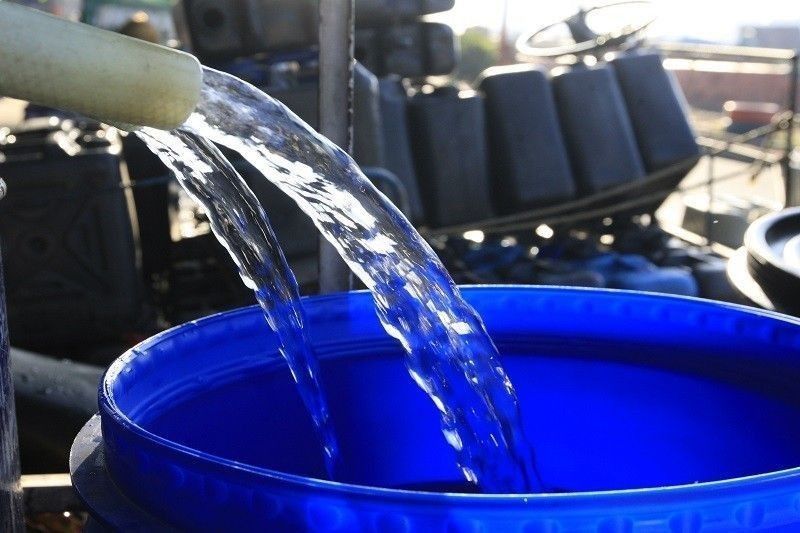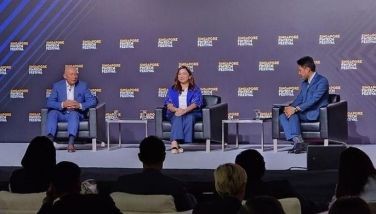Gauging transparency in two major water projects

Transparency and accountability are crucial to the delivery of public services in general and water, in particular. This is because people’s access to clean and safe drinking water – given population growth, urbanization, pollution and climate change – has become extremely challenging.
The demand for potable sources of water, over and above for flood control, storage and hydroelectric power generation, has grown over time especially in Metro Manila, now with a population of nearly 15 million. But this crisis is not new. In fact, in the early 1990s, it became the justification for the privatization of the water sector.
The National Water Crisis Act of 1995 (Republic Act 8041) laid down the legal foundation for the privatization of Metropolitan Waterworks and Sewerage System (MWSS). The law gave then-President Fidel Ramos emergency powers, for a period of one year, to manage the projected 75% increase in national demand for water.
Addressing this issue requires the development of several water infrastructure projects: the construction of new dams and reservoirs to provide additional sources of water, the modernization of the country’s water distribution system, and the improvement of water quality.
Stratbase ADR Institute President Professor Victor Andres “Dindo” Manhit and I co-authored a comparative study on two flagship infrastructure projects in the Philippines: The New Centennial Water Source- Kaliwa Dam Project (NCWS-KDP) and Wawa Bulk Water Supply Project-Upper Wawa Dam (WBWSP-UWD). They are also known as the Kaliwa Dam Project (KDP) and Upper Wawa Dam (UWD), respectively.
We sought to determine the extent and depth of their transparency and accountability. We used the following research instruments: the Construction Sector Transparency Initiative Infrastructure Data Standard (CoST IDS); processes of public consultation; social and environmental standards; and disclosure of contracts and agreements.
The CoST IDS is an analytical framework that determines the openness or restrictiveness of government or project owners in disclosing information and facts on data points or “items” of concern across the key stages of the infrastructure project cycle. This analysis revealed that the UWD project is more transparent and accountable than KDP with 179 total scores in 39 CoST IDS items compared with the latter having 104. On average, the UWD project chronicled nearly five (5) while KDP recorded nearly three (3), with six (6) as the highest score per item and zero (0) as the lowest.
Meaningful consultation on the impact of any proposed project on the affected communities and other stakeholders is likewise an important component of transparency. In as much as the location of both projects are inhabited by the indigenous peoples (Dumagat/Remontado), it is essential that people whose livelihood, culture, and ways of life that would be disturbed by the project should be consulted.
This should be done not only to comply with the provisions of the 1997 Indigenous Peoples Rights Act and the UN Declaration on the Right of Indigenous Peoples on the indigenous peoples’ right to Free, Prior, and Informed Consent (FPIC), but also to ensure the project’s success. The Wawa JV Co. Inc. (UWD project owner) has complied with the requirement to obtain FPIC. KDP has not.
A comprehensive social and environmental impact assessment is an equally important aspect in appraising the transparency of dam and big-ticket infrastructure projects. The WawaJV Co. Inc. has been issued with the Environmental Compliance Certificate (ECC) in July 2020 by the DENR-EMB (Environmental Management Bureau) while KDP has yet to meet the criteria to receive the full ECC. The issuance of FPIC is closely tied to receiving the full ECC.
Disclosure of contracts, agreements and bidding processes is central to transparency. This is to ensure that selection of contractors, allocation of funds and the overall project management are forthright.
On contracts and agreements, the UWD remains more transparent, garnering the highest score of six (6) in its CoST IDS’s contract phase while KDP recorded zero. The former as well is assessed to have maintained a more comprehensive website that keeps the public updated on the development of the dam’s construction apart from the regular news releases it posts compared to the latter.
The comparative study of the Kaliwa and Wawa dam projects highlights the need to advance transparency and accountability. Both big-ticket infrastructure projects started with lofty goals of addressing the country’s water scarcity issues and providing a reliable water supply for Metro Manila and nearby provinces. But the achievement of these objectives is contingent on the transparency with which the project is being administered.
The study clearly shows that the Wawa dam project is more transparent, despite some limitations. It has been able to deliver services far ahead of the Kaliwa project. Apparently, WawaJVCo. Inc. has been relatively successful in balancing water supply requirements with environmental and social considerations.
A relatively transparent organization heightens its legitimacy and value for money. It fosters economical, efficient, and effective use of resources and provision of services. It promotes equity in the allocation and use of resources in its operations. Thus, we should always demand that projects of this magnitude and scope adhere to the highest transparency standards.
Dr. Rizal G. Buendia, PhD is a non-resident fellow of think tank Stratbase ADR Institute.
- Latest




























